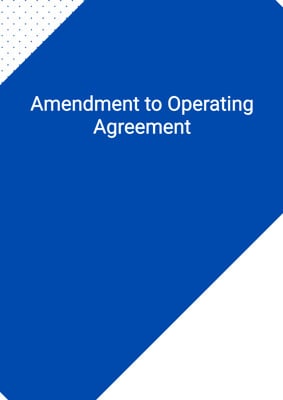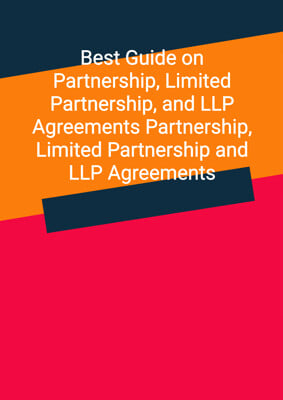How to Tailor the Document for Your Need?
01
Create Document
Fill in the details of the parties. You can click the "Fill with Member’s Information" button to complete it with information saved to your account.
02
Fill Information
Please fill in any additional information by following the step-by-step guide on the left hand side of the preview document and click the "Next" button.
03
Get Document
When you are done, click the "Get Document" button and you can download the document in Word or PDF format.
04
Review Document
Please get all parties to review the document carefully and make any final modifications to ensure that the details are correct before signing the document.
Document Preview
Document Description
The Limited Partnership Agreement is a legal document that establishes a partnership between a general partner and limited partners. The agreement outlines the purpose of the partnership and regulates the relationship between the partners. It is important because it sets out the rights, obligations, and responsibilities of each party involved.
The agreement begins with an interpretation section, defining key terms used throughout the document. It includes definitions for accounting period, affiliate, accounts, auditors, budget, business day, business plan, effective date, executive manager, partners, general partner, and more.
The agreement covers various aspects of the partnership, including partnership capital, further finance, profits and losses, management, executive management, partnership property, undertakings by partners, expenses, accounts, budgets and information, liability and indemnities, termination, waivers and amendments, notices and service, entire agreement, amendment, dispute resolutions, and no rights of third parties.
The agreement also includes provisions for confidentiality and announcements, default, assignments, and severability. It is a comprehensive document that ensures the smooth operation and management of the partnership.
Each section of the agreement provides detailed provisions and clauses that address specific aspects of the partnership. These provisions are designed to protect the interests of all parties involved and ensure the partnership operates in a fair and transparent manner.
Overall, the Limited Partnership Agreement is a crucial document that establishes the legal framework for the partnership and provides a clear understanding of the rights and responsibilities of each partner.
How to use this document?
1. Review the interpretation section of the agreement to understand the definitions of key terms used throughout the document.
2. Familiarize yourself with the provisions related to partnership capital, including the initial contributions of each partner and the calculation of capital accounts.
3. Understand the obligations for further finance, including the contributions required for funding and the treatment of capital contributions.
4. Review the provisions for profits and losses, including the allocation of profits and losses to partners' current accounts.
5. Understand the roles and responsibilities of the general partner and the limitations on the participation of limited partners in the management of the partnership.
6. Familiarize yourself with the provisions related to executive management, including the delegation of responsibilities to the chief executive and other executive managers.
7. Review the provisions for partnership property, including the ownership and management of partnership assets.
8. Understand the undertakings by partners, including the restrictions on engaging in competing businesses and the obligation to act in the best interests of the partnership.
9. Familiarize yourself with the provisions for expenses, accounts, budgets, and information, including the preparation of financial statements and the sharing of financial information.
10. Review the provisions for liability and indemnities, including the limitations on the liability of the general partner and the indemnification of the general partners by the partnership.
11. Understand the provisions for termination, including the circumstances under which the partnership may be dissolved and the procedures for winding up the business.
12. Familiarize yourself with the provisions for waivers and amendments, including the requirements for any changes to the agreement to be in writing and signed by all parties.
13. Review the provisions for notices and service, including the methods and timelines for serving notices under the agreement.
14. Understand the provisions for dispute resolution, including the jurisdiction clause and the process for resolving any disputes that may arise.
15. Ensure that you comply with the confidentiality provisions of the agreement and obtain the necessary approvals for any announcements related to the partnership.
16. Familiarize yourself with the provisions for default, including the rights of the non-defaulting partner in the event of an event of default.
17. Understand the provisions for assignments, including the restrictions on transferring partnership interests and the rights of the other partner to buy out a defaulting partner.
18. Ensure that you comply with the provisions for confidentiality and announcements, including keeping commercial and technical information confidential and obtaining approval for any announcements.
19. Familiarize yourself with the provisions for termination, including the procedures for winding up the business and distributing partnership assets.
20. Understand the provisions for waivers and amendments, including the requirements for any changes to the agreement to be in writing and signed by all parties.
21. Review the provisions for no rights of third parties, which state that only the parties to the agreement have the right to enforce its terms.
22. Ensure that you comply with the provisions for severability, which state that if any provision of the agreement is invalid or unenforceable, it does not affect the validity of the remaining provisions.
Please note that this guidance is a summary and does not constitute legal advice. It is important to consult with a legal professional to fully understand the implications and requirements of the Limited Partnership Agreement.
Not the right document?
Don’t worry, we have thousands of documents for you to choose from:






















































